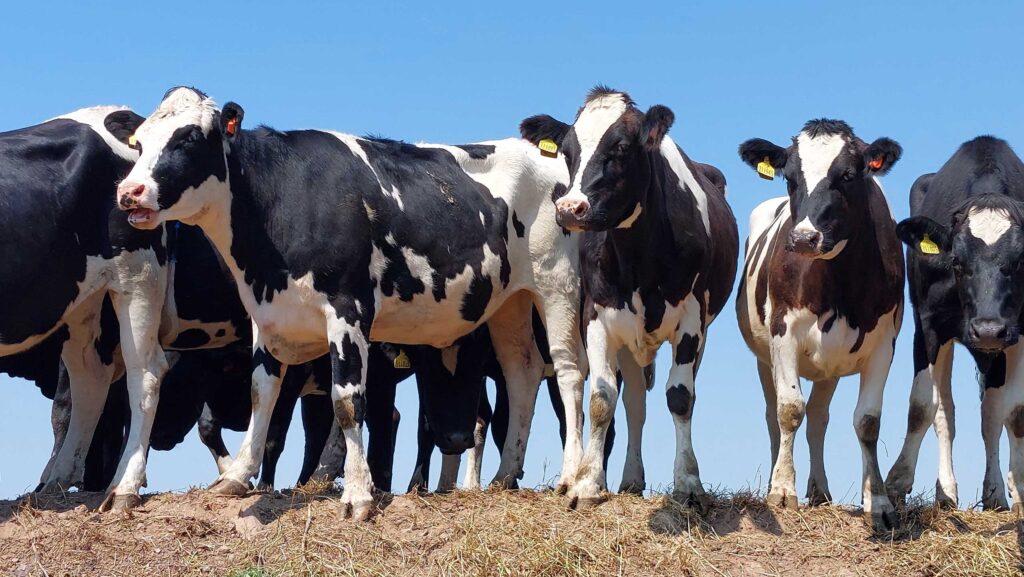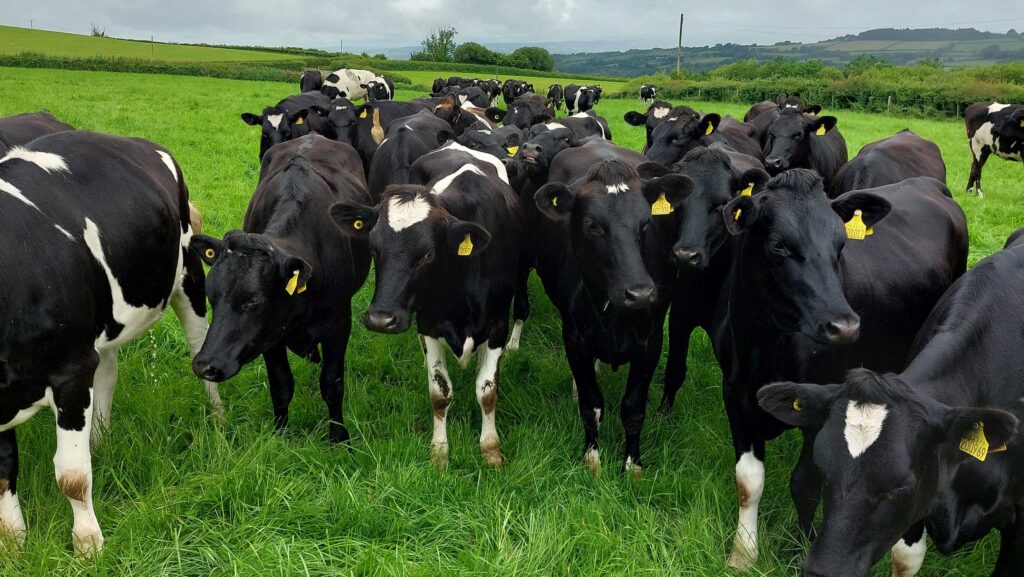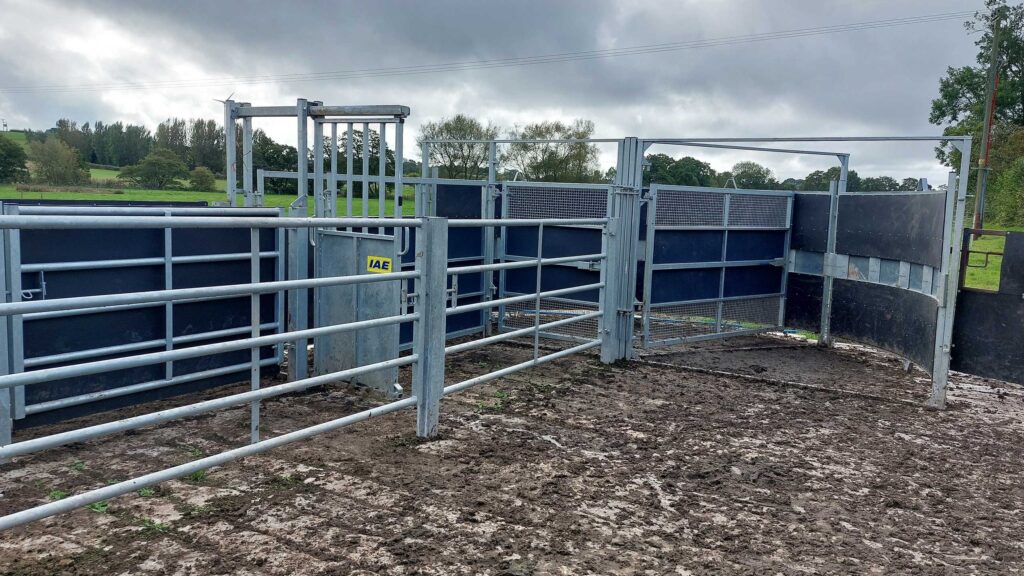How to get maiden heifers in-calf
 © MAG/Shirley Macmillan
© MAG/Shirley Macmillan Getting maiden heifers in-calf requires a farm-specific plan if an easy calving at 24 months of age, followed by a healthy, productive herd life, is to be achieved.
Mating heifers is not simply a case of deciding whether to use artificial insemination (AI) or natural service.
Labour requirements, handling facilities and the logistics of gathering bulling heifers for service all affect a farm’s approach, as do numbers involved, says Somerset-based independent veterinary consultant Kate Burnby.
See also: Benefits of training heifers to use the parlour
To find the best solutions, she advocates involving the whole farm team to plan mating and consider it as part of a complete heifer rearing and health plan.
This is because the main determinant for whether a heifer will get in-calf is her maturity and size, and good health underpins any attempts to get replacements pregnant, she says.
Puberty
“Heifers reach puberty – and you notice this when they start to show bulling – when they are 50% of the mature weight.
“So, if you want them to calve at 22-24 months of age, you have to start breeding at 14-16 months, and heifers need to be well grown at the point of service,” Kate explains.
Regular weighing and monitoring from birth will soon highlight whether heifers are reaching growth targets.
This means that early action to treat health problems, or increase feed rates, can put them back on track, says Kate.
The target weight for serving is a minimum of 60-65% of mature bodyweight.
“But 100% of heifers in a group have to be above 60% of mature weight – if 10-20% are under this, they will cycle but not get pregnant,” she adds.
Any planned treatments (such as vaccination or parasite control) or preventative health care (specific to the farm), must be completed at least one month ahead of mating.
This is to make sure that animals have full protection – which can be impacted by handling stress.
To reduce stress levels, Kate suggests running heifers through handling facilities before any inseminations, treatments, or vet checks as part of a breeding programme.

© MAG/Shirley Macmillan
Handling stress
“Avoid TB testing [as a rehearsal] because heifers need to feel calm and relaxed with both the system and the people,” she explains.
“Any pain such as lameness, social stress from mixing groups, or handling stress from being frightened by new people, sounds or situations will raise stress hormones and this works against the sex hormones.”
The most important factor for a first calving is that it is easy. This will also influence breeding strategy – for instance, selecting proven AI sires where calving ease is measured, or small native breeds and younger bulls for their smaller physical size for natural service.
“Having well-grown heifers also helps,” says Kate, adding that using sexed semen on heifers will produce female calves that are 1-2kg lighter than bull calves, thereby also reducing calving difficulties.
The decision about using some form of hormonal treatment to get heifers in-calf can be swayed by negative public perception or milk buyer preference.
Yet Kate points out that hormones are a valuable and cost-effective help when used strategically, or if rearing smaller numbers of heifers, when heat detection may be harder.
Cost benefit of hormones
Deciding on the level of intervention is an important discussion with the vet, says Kate: “Do a cost-benefit analysis of your system with your vet and don’t just take the face value of vet time, your time and drug costs.
“Also look at labour saving on heat detection, ease of calving from an AI sire and extra days in milk to balance these benefits.”
She suggests that where it is possible to carry out heat detection by eye (or automation, such as with collars), and heifers can be run through a race daily, breeding can be done without hormones.
“But it is labour-intensive, and you don’t get to front-load a calving block with heifers. Where heat detection options are minimal, use natural service.
“Some sort of strategic breeding programme can be helpful in cases where heifers are contract-reared off-farm, on another unit, or away at grass,” she says.
On farms with good handling facilities, so that at least one insemination can be done before turnout, heifer heats can be synchronised for AI with minimal intervention, then a sweeper bull used, says Kate.
However, such farms need to be very good at recording and use adjustable AI pens to hold shorter animals, which otherwise stand too far forward.

© MAG/Shirley Macmillan
Heat detection
The simplest method that offers the best of both worlds, according to Kate, involves heat detection and a simple prostaglandin injection.
A group of heifers is observed for heats for four weeks pre-mating, with individuals marked according to the week they come bulling, she explains.
At the planned start of mating, those heifers due to come bulling have no intervention.
Prostaglandin injections are given to those animals that were on heat one to two weeks ago, and this brings their next heat forward 10-14 days.
Prostaglandin is also used on heifers due on heat in the next two weeks to bring their oestrus forward. “So, you can then serve 100% of animals in a seven- to 10-day time period.
It uses fewer drugs, but you still achieve the objective of getting heifers in-calf,” Kate says.
As long as the farm can cope with serving all its heifers to an observed heat, a traditional prostaglandin programme will be a double shot for the whole group to get them to come bulling between two and five days later.
This leads to tight synchronisation without any prior heat detection.
At the other end of the spectrum is a full, controlled internal drug release and fixed-time AI.
This has a full cost including drugs, vet time and supervision, and handling heifers.
The advantage is that heifers calve when needed, they can have longer recovery time before being served again while milking and it ensures they calve on time, reducing rearing costs, says Kate.
Having compared treatment costs with savings, her only caution is against relying on full hormonal programmes to synchronise maiden heifers.
Kate says it could mask poor fertility by breeding from animals with weak heats, rather than selecting heifers for the herd based on strong fertility.
